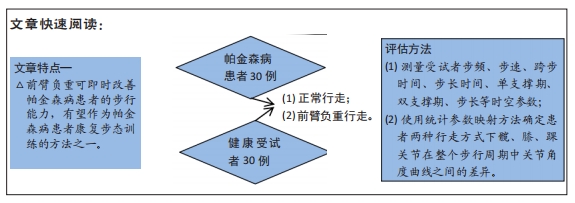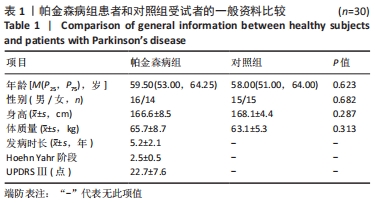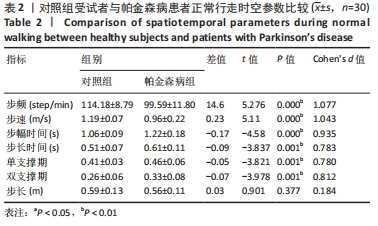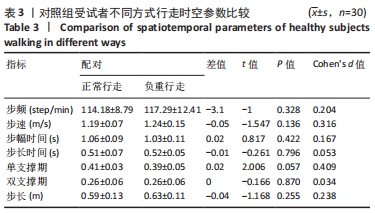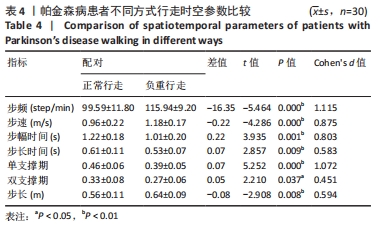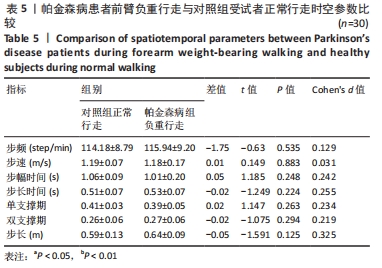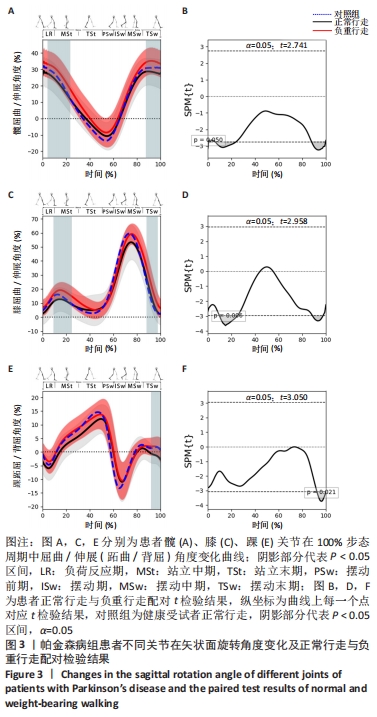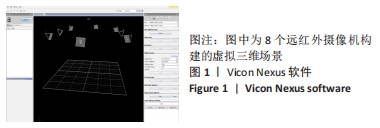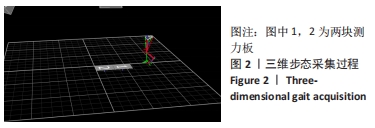[1] HAYES MT. Parkinson’s Disease and Parkinsonism. Am J Med. 2019;132(7): 802-807.
[2] Opara J, Malecki A, Malecka E, et al. Motor assessment in Parkinson`s disease. Ann Agric Environ Med. 2017;24(3):411-415.
[3] 文龙, 钱晋武, 沈林勇, 等. 帕金森病患者步态测量与定量分析[J]. 中国康复医学杂志,2014,29(7):637-641.
[4] XU H, HUNT M, BO FOREMAN K, et al. Gait alterations on irregular surface in people with Parkinson’s disease. Clin Biomech (Bristol, Avon). 2018;57:93-98.
[5] MORRIS M, IANSEK R, MCGINLEY J, et al. Three-dimensional gait biomechanics in Parkinson’s disease: evidence for a centrally mediated amplitude regulation disorder. Mov Disord. 2005;20(1):40-50.
[6] PICELLI A, CAMIN M, TINAZZI M, et al. Three-dimensional motion analysis of the effects of auditory cueing on gait pattern in patients with Parkinson’s disease: a preliminary investigation. Neurol Sci. 2010;31(4):423-430.
[7] MADETE JK, KLEIN A, DUNNETT SB, et al. Three-dimensional motion analysis of postural adjustments during over-ground locomotion in a rat model of Parkinson’s disease. Behav Brain Res. 2011;220(1):119-125.
[8] OPARA J, MALECKI A, MALECKA E, et al. Motor assessment in Parkinson`s disease. Ann Agric Environ Med. 2017;24(3):411-415.
[9] PATAKY TC, VANRENTERGHEM J, ROBINSON MA. The probability of false positives in zero-dimensional analyses of one-dimensional kinematic, force and EMG trajectories. J Biomech. 2016;49(9):1468-1476.
[10] PATAKY TC, ROBINSON MA, VANRENTERGHEM J.Vector field statistical analysis of kinematic and force trajectories. J Biomech. 2013;46(14):2394-2401.
[11] PATAKY TC, VANRENTERGHEM J, ROBINSON MA. Zero- vs. one-dimensional, parametric vs. non-parametric, and confidence interval vs. hypothesis testing procedures in one-dimensional biomechanical trajectory analysis. J Biomech. 2015;48(7):1277-1285.
[12] PATAKY TC, ROBINSON MA, VANRENTERGHEM J, et al. Vector field statistics for objective center-of-pressure trajectory analysis during gait, with evidence of scalar sensitivity to small coordinate system rotations. Gait Posture. 2014;40(1): 255-258.
[13] 中华医学会神经病学分会帕金森病及运动障碍学组 中国医师协会神经内科医师分会帕金森病及运动障碍学组.中国原发性震颤的诊断和治疗指南(2020)[J].中华神经科杂志,2020,53(12):987-995.
[14] PATERSON KL, HINMAN RS, METCALF BR, et al. Plug-in-Gait calculation of the knee adduction moment in people with knee osteoarthritis during shod walking: comparison of two different foot marker models. J Foot Ankle Res. 2017;10:8.
[15] ISA AD, MCGREGOR ME, PADMORE CE, et al. Effect of Radial Lengthening on Distal Forearm Loading Following Simulated In Vitro Radial Shortening During Simulated Dynamic Wrist Motion. J Hand Surg Am. 2019;44(7):556-563.
[16] HWANG I, LIN CK, WU P. Tremor modulation in patients with Parkinson’s disease compared to healthy counterparts during loaded postural holding. J Electromyogr Kinesiol. 2009;19(6):e520-e528.
[17] MASSION J, IOFFE M, SCHMITZ C, et al.Acquisition of anticipatory postural adjustments in a bimanual load-lifting task: normal and pathological aspects. Exp Brain Res. 1999;128(1-2):229-235.
[18] SOBIE EA. An introduction to MATLAB. Sci Signal. 2011;4(191):tr7.
[19] SERRAO M, RANAVOLO A, CASALI C. Neurophysiology of gait. Handb Clin Neurol. 2018;154:299-303.
[20] BONNARD M, PAILHOUS J.Intentional compensation for selective loading affecting human gait phases. J Mot Behav. 1991;23(1):4-12.
[21] DUYSENS J, CLARAC F, CRUSE H. Load-regulating mechanisms in gait and posture: comparative aspects. Physiol Rev. 2000;80(1):83-133.
[22] SIRAGY T, NANTEL J. Absent Arm Swing and Dual Tasking Decreases Trunk Postural Control and Dynamic Balance in People With Parkinson’s Disease. Front Neurol. 2020;11:213.
[23] VALDES O, RAMIREZ C, PEREZ F, et al. Contralateral effects of eccentric resistance training on immobilized arm. Scand J Med Sci Sports. 2021; 31(1):76-90.
[24] ABBRUZZESE G, MARCHESE R, AVANZINO L, et al. Rehabilitation for Parkinson’s disease: Current outlook and future challenges.Parkinsonism Relat Disord. 2016; 22 Suppl 1:S60-S64.
[25] PISTACCHI M, GIOULIS M, SANSON F, et al. Gait analysis and clinical correlations in early Parkinson’s disease. Funct Neurol. 2017;32(1):28-34.
[26] MILLER KJ, SUAREZ-IGLESIAS D, SEIJO-MARTINEZ M, et al. Physiotherapy for freezing of gait in Parkinson’s disease: a systematic review and meta-analysis. Rev Neurol. 2020;70(5):161-170.
[27] DEBU B, DE OLIVEIRA GODEIRO C, LINO JC, et al. Managing Gait, Balance, and Posture in Parkinson’s Disease. Curr Neurol Neurosci Rep. 2018;18(5):23.
[28] JANKOVIC J. Parkinson’s disease: clinical features and diagnosis. J Neurol Neurosurg Psychiatry. 2008;79(4):368-376.
[29] MURRAY MP, SEPIC SB, Barnard EJ. Patterns of sagittal rotation of the upper limbs in walking. Phys Ther. 1967;47(4):272-284.
[30] ZEHR EP, DUYSENS J. Regulation of arm and leg movement during human locomotion. Neuroscientist. 2004;10(4):347-361.
[31] DONKER SF, DAFFERTSHOFER A, BEEK PJ. Effects of velocity and limb loading on the coordination between limb movements during walking. J Mot Behav. 2005; 37(3):217-230.
[32] LOVEJOY CO. The natural history of human gait and posture.Part 3. The knee. Gait Posture. 2007;25(3):325-341.
[33] DIETZ V, MICHEL J. Locomotion in Parkinson’s disease: neuronal coupling of upper and lower limbs.Brain. 2008;131(Pt 12):3421-3431.
|
